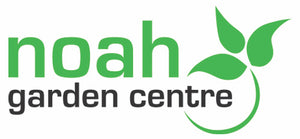Indoor gardening is a wonderful way to bring life and greenery into your home. However, managing plants in pots without drainage holes (indoor pots) can be tricky.
Overwatering is a common issue that can lead to root rot and other plant health problems. In this blog, we'll discuss how often to water your indoor plants and provide tips on how to avoid overwatering, especially when your pots lack drainage holes.
Understanding the Watering Challenge
Plants need water to thrive, but too much water can be just as harmful as too little. When using pots without drainage holes, the risk of overwatering increases significantly because excess water has nowhere to escape. This can lead to waterlogged soil and root rot, which can be fatal for your plants.

How Often to Water Indoor Plants
The frequency of watering indoor plants depends on several factors, including the type of plant, the size of the pot, the type of soil, and the indoor environment. Here are some general guidelines to help you determine how often to water:
- Type of Plant: Different plants have different water needs. Succulents and cacti require less water, while tropical plants need more frequent watering.
- Size of the Pot: Larger pots hold more soil, which can retain moisture longer than smaller pots.
- Soil Type: Well-draining soil dries out faster than dense, clay-based soil.
- Indoor Environment: Factors like humidity, temperature, and light levels affect how quickly the soil dries out.
A good rule of thumb is to check the soil moisture before watering. Stick your finger about an inch into the soil. If it feels dry, it's time to water. If it feels moist, wait a few days and check again.

Tips for Watering Plants in Pots Without Drainage Holes
To successfully grow plants in pots without drainage holes, you'll need to take extra care to avoid overwatering. Here are some effective strategies:
1. Use a Moisture Meter
A moisture meter is a handy tool that measures the moisture level in the soil. This can help you accurately determine when your plant needs water, reducing the risk of overwatering.
2. Layer the Bottom with Rocks or Pebbles
Place a layer of rocks or pebbles at the bottom of the pot before adding soil. This creates a space where excess water can accumulate, keeping it away from the plant's roots.
3. Use Well-Draining Soil
Choose a well-draining potting mix to ensure that water can move through the soil quickly. You can also mix in perlite, sand, or small stones to improve drainage.
4. Water Sparingly and Evenly
When watering, do so sparingly and evenly. Pour small amounts of water around the pot, ensuring that the water spreads evenly throughout the soil. Avoid pouring too much water in one spot, as this can lead to water pooling.
5. Monitor and Adjust Watering Schedule
Regularly monitor the soil moisture and adjust your watering schedule as needed. During the monsoon or colder months, plants typically require less water due to slower growth and reduced evaporation.
6. Use Self-Watering Planters
Self-watering planters are designed to provide consistent moisture to plants without the risk of overwatering. These planters have a reservoir that allows plants to draw water as needed, which can be particularly helpful for pots without drainage holes.
7. Wick Watering System
A wick watering system uses a wick to draw water from a reservoir into the soil, maintaining consistent moisture levels without over-saturating the soil. This method can be particularly useful for indoor plants in pots without drainage holes.
8. Use a Water Indicator
A water indicator is a useful tool that visually signals when it's time to water your plants. These devices are often color-coded or have a gauge that moves to indicate the soil moisture level. This can help prevent overwatering by giving you a clear signal of when your plant actually needs water.

Signs of Overwatering and Underwatering
It's essential to recognize the signs of both overwatering and underwatering to keep your plants healthy.
Signs of Overwatering:
- Yellowing leaves
- Wilting despite wet soil
- Root rot (mushy, brown roots)
- Mold or fungus on the soil surface
Signs of Underwatering:
- Dry, crispy leaves
- Wilting despite dry soil
- Stunted growth
- Brown leaf tips

Managing indoor plants in pots without drainage holes requires careful attention to watering practices.
By using tools like moisture meters and water indicators, implementing proper soil and pot layering techniques, and monitoring your plants closely, you can successfully avoid overwatering and keep your indoor garden thriving. Embrace these strategies to enjoy the beauty and benefits of indoor gardening without the worry of root rot or waterlogged soil. Happy gardening!



